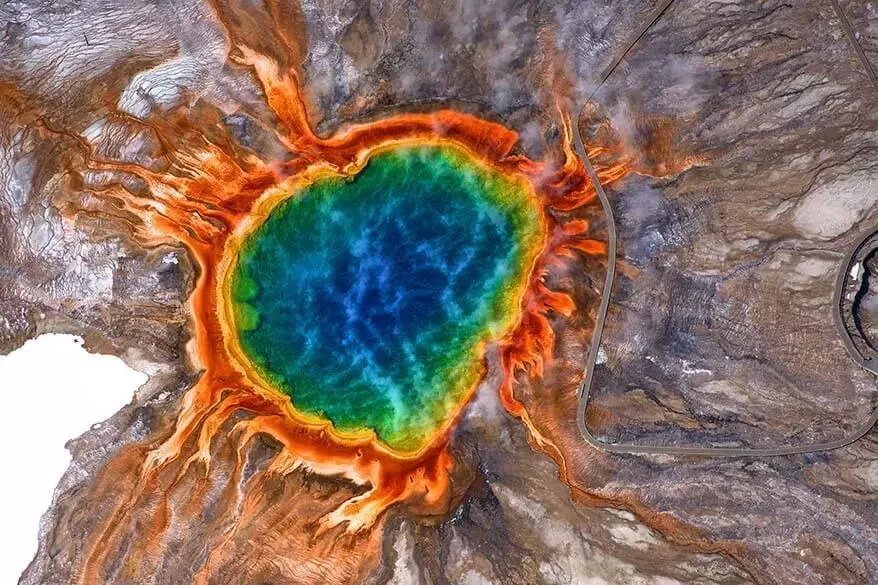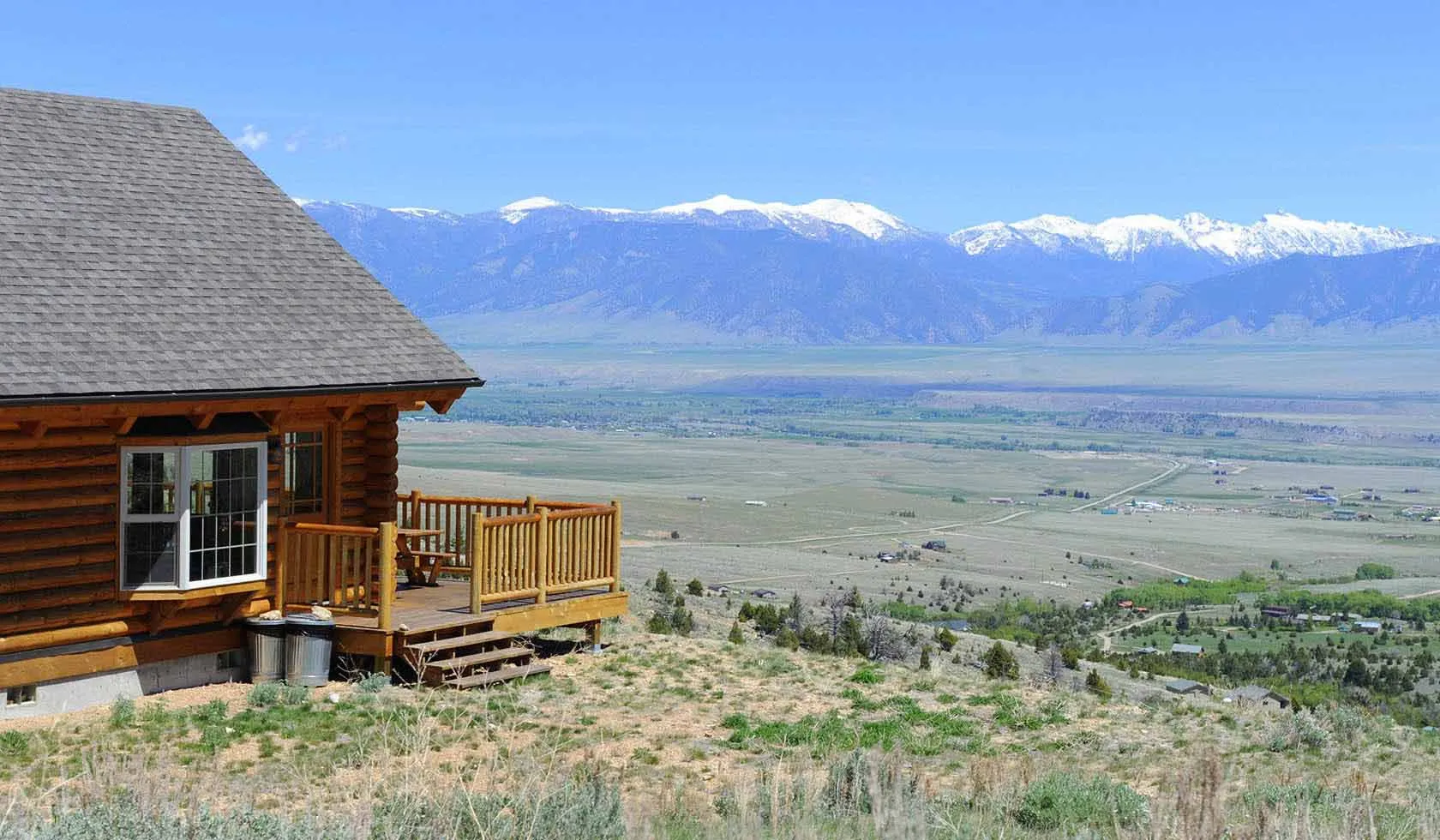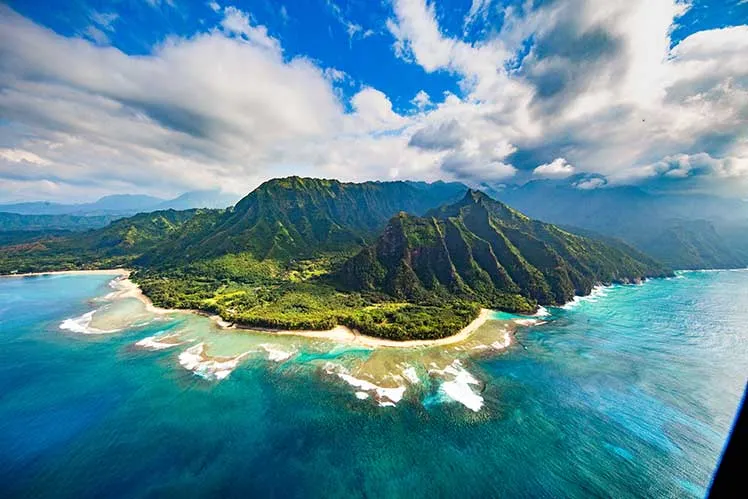Let me be your friendly companion, here to share some fascinating facts about one of the most iconic destinations in the United States: Yellowstone National Park. If you are like me, you are always looking for the next great adventure and Yellowstone is a treasure trove of natural wonders that you cannot miss.
I gather this information from people around me but I think you are as curious as I am, right? So I hastily compiled for you a list of 8 facts about Yellowstone National Park that I know for you to read. Going beyond the basics is your ticket to discovering the secrets of this majestic place. So join me and nationalparkshops.com to explore the inspiring world of Yellowstone, where every corner holds a story waiting to be discovered.
Yellowstone National Park is a true wonder of nature, boasting a diverse landscape, fascinating geological features, and an abundance of wildlife. As the world’s first national park, established in 1872, Yellowstone continues to captivate visitors from around the globe. Here are the top 8 fun facts about Yellowstone National Park that you need to know before your visit!
>> Read More: What State Is Yellowstone National Park In: Located on Map
Yellowstone Is The World’s First National Park!
Ulysses S. Grant enacted the Yellowstone Park Act in 1872, which established the first national park in the world. Remarkably, only three expeditions took place between 1869 and 1871 to investigate the region before it received protection.
We are fortunate for the conservation initiatives that allow us to appreciate this magnificent landscape for future generations!
Yellowstone Is Home To The Most Famous Geyser On Earth!
One of the other facts about Yellowstone National Park. Old Faithful is the most well-known geyser in the world, but it isn’t the tallest in the park. The tallest active geyser globally is Steamboat Geyser, found in Norris Geyser Basin, roughly an hour’s drive from Old Faithful (assuming no buffalo blockages). However, the timing of Steamboat’s eruptions can be erratic, so you need a good amount of luck to see its nearly 400-foot eruption, while Old Faithful erupts on a reliable schedule, which is why it’s so famous.
Yellowstone Has The Most Magnificent Views!
There is no single location in the park where both the Upper and Lower Falls of the Yellowstone River can be seen simultaneously. This occurs because the Yellowstone River takes a significant S-curve after dropping 109 feet at the Upper Falls, before it descends another 308 feet at the Lower Falls. We prefer to see the Upper Falls from the brink, while for the Lower Falls, our go-to viewing point is Artist Point.
Yellowstone Has The 3rd Largest Hot Spring In The World!
Grand Prismatic Spring ranks as the third largest hot spring globally. Situated in the Midway Geyser Basin, it has a depth of 121 feet, which means it could easily engulf a building over 10 stories tall.

Yellowstone Is Home To Natural Phenomena
One of the other facts about Yellowstone National Park. Yellowstone National Park is home to four distinct categories of geothermal features. Each of these can be observed at the Fountain Paint Pots boardwalk, which provides an excellent opportunity for visitors to experience them firsthand. The types include geysers, hot springs, mud pots, and fumaroles.
One of the most renowned geysers in this region is Old Faithful, which regularly shoots water high into the sky and is fueled by the underlying supervolcano that lies beneath the park’s surface. This unique geothermal activity is a result of the intense heat generated from molten rock deep within the Earth, contributing to the spectacular natural displays found throughout Yellowstone.
Yellowstone Has An Inn That Is Century Old
The Old Faithful Inn, which was constructed between 1903 and 1904, was conceived by a young architect named Robert Reamer, who was only 29 years old at the time. During that era, many hotels in national parks were intentionally designed to contrast with their surroundings, creating a sense of familiarity and comfort for guests who may have felt apprehensive about the wild nature around them.
A prime example of this is the Lake Hotel at Yellowstone, characterized by its bright yellow color and Queen Anne Victorian architectural style. However, the design of Old Faithful differs significantly; it blends seamlessly into the natural environment, making it feel like a part of the wilderness. We are pleased that this unique approach was taken!
Yellowstone Has Some Of The Most Diverse Wildlife
The Madison River Valley, located just beyond the West Entrance of Yellowstone National Park, is notable for hosting one of the rare elk populations that do not leave the park’s boundaries in winter. Typically, elk will migrate to lower altitudes during the colder months in search of food and protection, especially during the calving season when they need safe environments for their young.
However, one of the amazing facts about Yellowstone National Park is that this particular valley seems to provide all the necessary resources for the elk to thrive throughout the entire year, which explains why they remain in the area instead of migrating.

Yellowstone Has The Largest High-alpine Lake In North America!
One of the interesting facts about Yellowstone National Park. Yellowstone Lake holds the title of the largest high-elevation lake in North America. It is located at an impressive altitude of 7,733 feet above sea level, making it a remarkable geological feature. While it offers stunning views for photography enthusiasts, the lake is not particularly suitable for swimming due to its frigid temperatures.
During the summer months, the average water temperature hovers around 45 degrees Fahrenheit, which can be quite brisk! This makes it an ideal spot for those looking to take a refreshing dip, akin to a polar bear plunge, especially on warm summer days.
>> Read More: How Many Days Need For Yellowstone National Park
When is the best time to visit Yellowstone National Park?
The best time to visit Yellowstone National Park depends on your interests and preferences. Here’s a quick overview of the different seasons:
- Summer (June-August): This is the busiest time of year, with warm weather and plenty of daylight for exploring. However, crowds can be large, and accommodations may be more expensive.
- Fall (September-November): Autumn brings cooler temperatures, fewer crowds, and stunning foliage. Many facilities remain open, making it a great time for hiking and wildlife viewing.
- Winter (December-February): Yellowstone transforms into a winter wonderland, with opportunities for cross-country skiing, snowshoeing, and wildlife watching. However, many roads and facilities are closed, and access is limited.
- Spring (March-May): Spring is a transitional season, with a mix of snow and warmer weather. While crowds are smaller, many facilities are still closed, and road conditions can be challenging.
>> Read More: Yellowstone National Park Weather Forecast: Month-by-Month

FAQs about facts about Yellowstone National Park
What is so special about Yellowstone National Park?
Yellowstone National Park, established in 1872, is the world’s first national park and covers over 2.2 million acres, making it larger than Rhode Island and Delaware combined. It sits atop an active supervolcano, featuring one of the largest calderas in the world, measuring 45 by 30 miles. The park is renowned for its geothermal features, including more than 10,000 hydrothermal features and over 500 active geysers, which is more than half of the world’s total.
The park’s most famous geyser, Old Faithful, erupts approximately every 90 minutes, providing a predictable and awe-inspiring spectacle for visitors. Additionally, the Grand Prismatic Spring, the largest hot spring in the United States, showcases stunning colors due to the thermophilic bacteria that thrive in its hot waters.
Yellowstone is also home to a diverse range of wildlife, including bison, elk, grizzly bears, and wolves. The park’s varied ecosystems support over 67 species of mammals and 322 species of birds, making it a prime location for wildlife enthusiasts.
What are some great outdoor activities in Yellowstone?
Yellowstone provides many outdoor activities for visitors:
- Hiking: There are over 1,000 miles of trails suitable for all skill levels, including popular ones like Mount Washburn and Uncle Tom’s Trail, which showcases beautiful views of the Grand Canyon of the Yellowstone.
- Wildlife Watching: The park is ideal for seeing wildlife in their natural environments, especially in areas like Lamar Valley and Hayden Valley, which are rich in bison, elk, and wolves.
- Camping: With 12 campgrounds and more than 2,000 campsites, Yellowstone offers plenty of camping options. Notable campgrounds include Madison and Canyon Campgrounds.
- Fishing: Yellowstone’s rivers and lakes attract many anglers, with Yellowstone Lake and the Firehole River being favored spots for catching native cutthroat trout.
- Boating: Visitors can kayak or canoe on Yellowstone Lake, North America’s largest high-alpine lake, providing unique views of the park.
- Photography: The stunning landscapes, geothermal features, and varied wildlife make Yellowstone a great place for photography, particularly at sites like the Grand Canyon of the Yellowstone and Grand Prismatic Spring.
- Snow Sports: In winter, the park becomes a snowy paradise with snowshoeing, cross-country skiing, and snowmobiling available, offering a peaceful retreat from summer crowds.
What are some notable historical sites in Yellowstone?
Besides these facts about Yellowstone National Park, Yellowstone is rich in history, with several notable sites that reflect its cultural heritage:
- Old Faithful Inn: Built in 1904, this historic lodge is one of the most iconic examples of “Parkitecture.” Its rustic log construction and grand lobby make it a must-visit for anyone exploring the park.
- Mammoth Hot Springs: This area features stunning terraces formed by mineral deposits from the hot springs. The historic Mammoth Hot Springs Hotel, built in 1885, is located nearby and offers a glimpse into the park’s early tourism.
- Fort Yellowstone: Established in the late 19th century, this former military outpost was used to protect the park’s resources. Today, visitors can explore the historic buildings and learn about the role of the U.S. Army in preserving Yellowstone.
- The Nez Perce National Historic Trail: This trail commemorates the migration of the Nez Perce tribe through Yellowstone in 1877. Visitors can learn about the tribe’s history and their connection to the land.
- Historic Structures: Yellowstone is home to over 900 historic buildings, including ranger stations, visitor centers, and historic cabins. Many of these structures are listed on the National Register of Historic Places, showcasing the park’s rich architectural heritage.
Conclusion
Yellowstone National Park is truly a wonderland that goes beyond the typical travel experience. As someone who has journeyed to countless destinations around the globe, I can confidently say that Yellowstone stands out with its unique blend of natural beauty, geological marvels, and diverse wildlife.
In this article, “8 Facts About Yellowstone National Park“, I have delved into some of the most intriguing aspects of this incredible park. Remember, Yellowstone isn’t just a park, it’s a vibrant ecosystem teeming with stories waiting to be discovered. So pack your bags, grab your camera, and get ready to explore the wonders of Yellowstone National Park. Happy travels, and may your journey be filled with unforgettable moments and breathtaking sights!
Read More:

